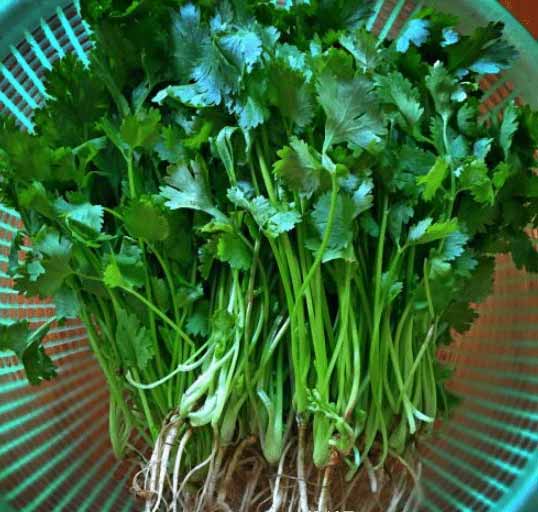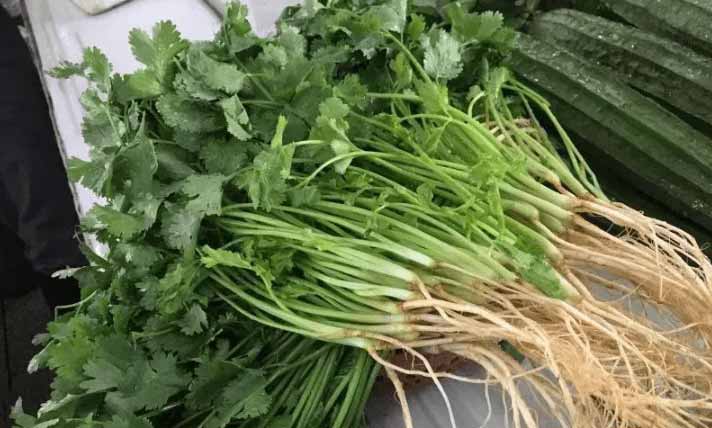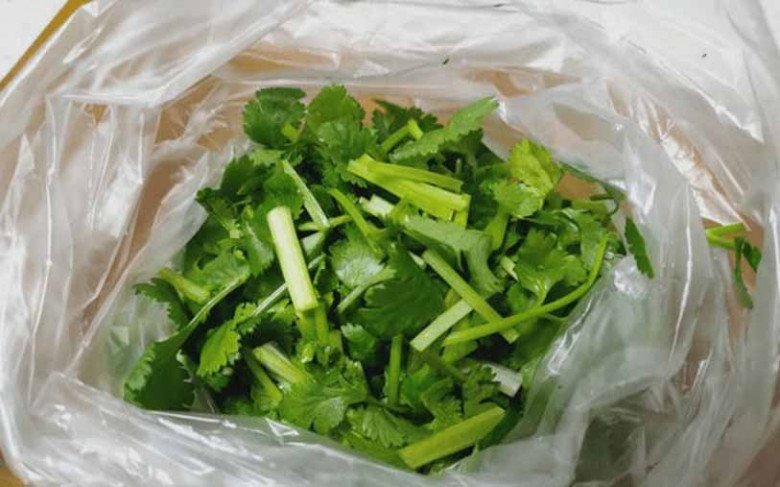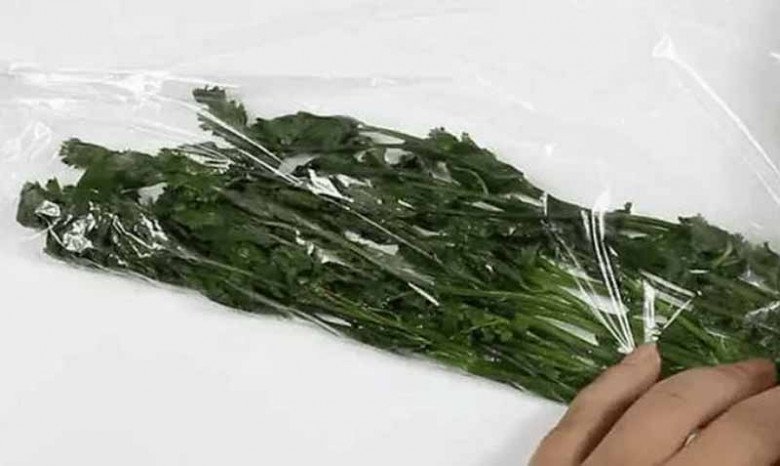
Coriander is not only fragrant but also highly nutritious. Research has shown that coriander is rich in vitamins and essential minerals. Notably, the vitamin C content in this herb is exceptionally high, surpassing that of regular vegetables. In addition, coriander contains ten times more carotene than tomatoes, and consuming it regularly aids digestion and enhances flavor.
The price of coriander varies depending on the season. When it’s in abundance, it’s a great idea to stock up and store it for later use. However, improper storage methods can lead to the herb spoiling in just 2-3 days, resulting in a loss of its fresh flavor.

So, is there a way to keep coriander fresh for longer without it rotting? Today, Bếp Eva will share a method to keep coriander fresh for up to a year without spoilage. Let’s dive into the details below.
Guidelines for Choosing Fresh Coriander
When purchasing coriander, it’s essential to select fresh, recently harvested bunches to ensure the best quality for this flavorful herb.
1. Roots
To determine the freshness of coriander, observe the roots. Yellow roots often indicate a lack of nutrients. Opt for coriander with roots that have a light green hue; the darker the color, the more flavorful and aromatic the herb will be.

2. Stems
Try snapping the stems with your fingers. Fresh coriander will have crisp, juicy stems. If the stems appear wilted, it’s a sign that the herb is past its prime and won’t retain its fresh flavor.
3. Leaves
Typically, coriander leaves are green. Avoid purchasing coriander with pale green or yellowish leaves, as these tend to spoil quickly, have reduced nutritional value, and may impact your health negatively.
Methods for Storing Coriander
1. Preparation
– Remove any wilted leaves from the coriander and keep only the fresh, green roots and leaves intact. It’s crucial to maintain the original base of the coriander to extend its shelf life.

– Wash the coriander thoroughly two to three times and drain the water.
– Soak the coriander in a solution of one teaspoon each of baking soda and salt for 20 minutes. This step effectively eliminates any insect eggs or pesticide residue.

– After soaking, rinse the coriander again with clean water and let it air dry in a well-ventilated area. Remember, for optimal preservation, the coriander must be completely dry before storage.
2. Storage Methods
Once the coriander is clean and dry, you can choose from the following four simple storage methods.

Plastic Bag
Place the cleaned coriander into a large plastic bag and seal it tightly. Store the bag in the freezer compartment of your refrigerator. This method will keep the coriander fresh for up to three months.

Hydroponics
Fill a glass with clean water and add a teaspoon of sugar. Place the coriander in the glass, ensuring that the roots and stems are submerged. The sugar acts as a nutrient source, helping the coriander stay fresh. Remember to change the water regularly. This method can keep coriander fresh for a minimum of three months.
Plastic Wrap

Place the cleaned coriander on a sheet of plastic wrap and wrap it securely, but not too tightly, as this can cause the herb to rot. Once wrapped, store the coriander in the refrigerator. This method will keep the coriander fresh for up to six months.
Ziplock Bag

Cut the coriander into manageable sections and place them in a ziplock bag. Seal the bag tightly and store it in the freezer. Using this method, the coriander will remain fresh for up to a year without wilting or rotting.
Each storage method has its advantages, but coriander is always at its best right after harvesting. Prolonged storage may result in a loss of flavor and nutrients, so it’s advisable not to keep it for too long.






























